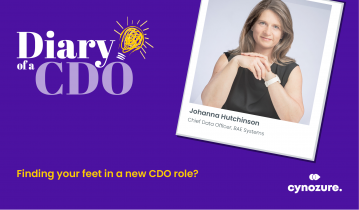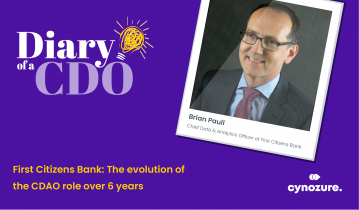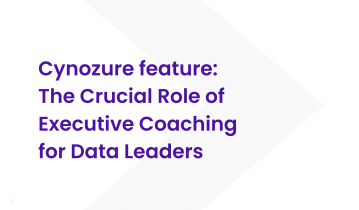Intro
The right planning horizon for your data strategy
With so much uncertainty, change, movement in people behaviour, adjustments in business strategy – and long-tail world events – it’s normal to wonder about the period over which you should plan your strategy. How can you be sure of a short, mid and long term plan when everything might change tomorrow?
One Big Message
Data strategy is the framework that enables you to generate business value through the application of data and analytics. So with that in mind, we need to think about what timescale is sensible.
Different time horizons
Let’s think about it like a funnel where you start off with a really wide reach as far as you can think as possible. And then, slowly come down to a point where you’re at really specific initiatives and activities. Now those are two different time horizons for specific activities we need to do now and there’s a really long-term vision for where we want to go.
Regardless of the size of your organization or of the stage that you’re at, it’s useful to think about these different planning horizons when planning out and thinking about your data strategy.
Vision as a top-level: Simon Sineck, the famous management guru and leadership guru, would talk about the purpose and the why. The “why the vision”, the north star of your data strategy should remain pretty unchanged regardless of what kind of time horizon you’re looking at.
Business strategy: Data strategy should clearly align itself with the vision. That includes taking a broad look at the data strategy itself, the components of the strategy we are trying to execute and the kind of capabilities that you want to build.
Operational plan: This is when you start to get into the nuts and bolts of what you want to do. This includes looking at what you want to achieve in that year to contribute to the data strategy, which ultimately contributes to the business strategy.
Some additional considerations to take into account
Budget cycles: If tied to budget cycles, then clearly you need to think carefully to align yourselves to financial planning. Plans you put in place for your data strategy aligned up with any budgetary decisions or requests you need to make when it comes to being able to execute the strategy.
Otherwise, if you’re not tied to that financial budgeting cycle quite so tightly, then you can flex a bit more and I’ve seen some organizations even request money quarterly so that they can get the next quarter’s investment. It’s good to sort of allocate the budget across over one year or a number of years, and then grow from there.
Mechanism from vision to activity tracking: This whole mechanism of going from vision to activity tracking at a detailed level allows you to really flex and adjust the days, weeks, months, quarters of activity that you’re going to do without changing your overarching goal for the year.
Using retrospectives: At the end of each of your planning horizons, you should be looking back to assess what went well, what didn’t go so well and what kind of changes we might want to make off the back of that looking forward. Not only should you consider the outcomes and how successful you are in the outcomes you’ve achieved, but also in the process itself, how this plan processes and how these planning horizons really worked for you.
To summarise
The idea here is to create a really adaptable data strategy that can flex and adjust around what’s happening in the real world. To know what’s happening within your business so it will not fix you and handcuff you to a stated data strategy that may have gone out of date a number of years back.
Want to know more about this topic? Listen to this episode of Hub & Spoken







